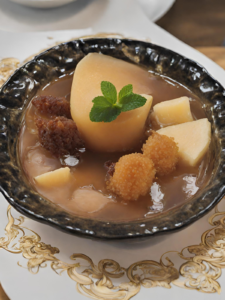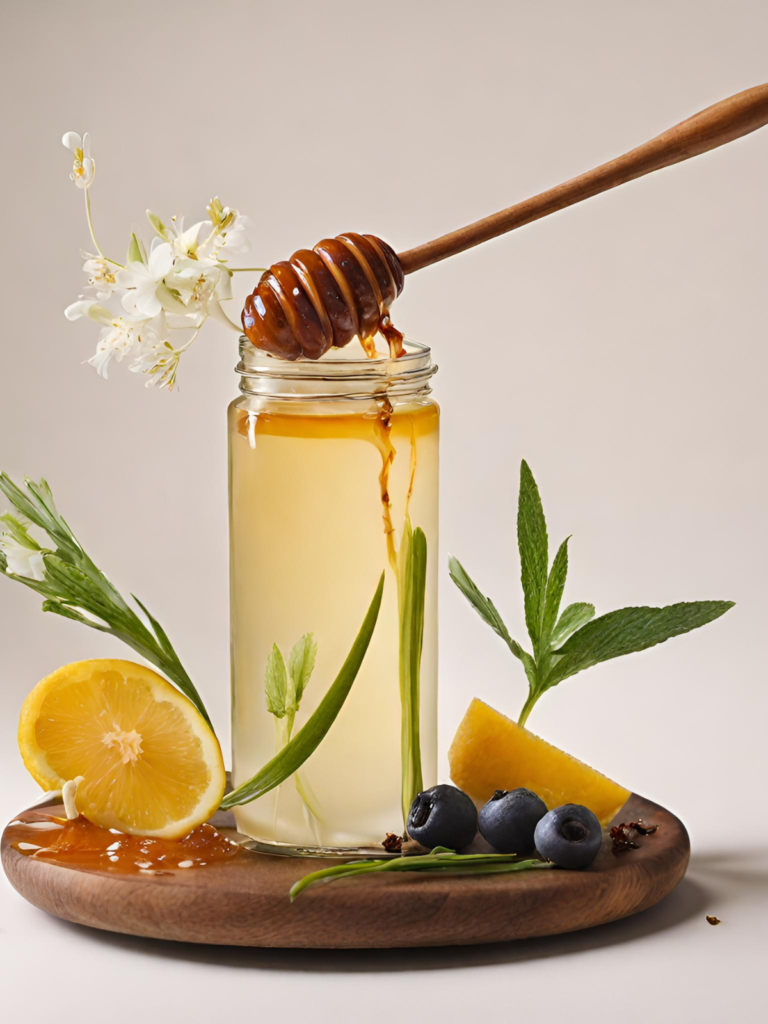Ayote En Miel:1 Revealing the Taste Gem
The Beginning
“Ayote en miel” is a secret gem among the many delicious foods that are available. It is loved for both its cultural meaning and its delicious taste. This food has been around for a long time and has become a gem of cooking. Embark on a trip to discover the mysteries of “ayote en miel.”
History and its roots
The story behind “Ayote en miel” has deep roots in the history and culture of many places. This dish has been an important part of local practices and events since it comes from [name an area or culture]. Its changes over hundreds of years show how flexible and creative cooking customs can be.
The heart of the dish is Ayote
At the heart of “ayote en miel” is the simple but useful ayote. The different kinds of this vegetable give the dish a unique taste and appearance. From the soft sweetness of young ayotes to the smokiness of older ones, each type makes food more interesting in its own way.

Ayote En Miel
How to Make Miel the Right Way
The sweet taste of “ayote en miel” comes from the careful steps used to make “miel,” or syrup. Modern methods and methods that have been passed down through generations are both used, and both add levels of complexity and depth to the dish. Making the right “miel” takes a lot of skill and shows how rich the food tradition is.
Meaning in Culture
“Ayote en miel” is not only a delicious dish, but it also has a deep societal meaning. This food is often served at parties, fairs, and other events where people get together. It has become an important part of national identity in the places where it is honored, representing [insert specific sign].
A Burst of Tastes
The unique flavor of “ayote en miel” is what makes it stand out. The mild tastes of ayote and the rich sweetness of “miel” work together to make a burst of flavors on the tongue. Spices and foods that go well together make the whole thing more enjoyable, making it a culinary treat.
Differences by region
The great thing about “ayote en miel” is that it can be changed to suit different tastes. In different parts of the world, the dish is made in different ways that show the local tastes and cooking customs. Trying these different versions gives you a wide range of food experiences.
Ayote in Modern Food
While it has traditional roots, “ayote en miel” has found a place in modern cooking thanks to cooks who are always trying new things. From high-end restaurants to popular fusion spots, cooks are adding this dish to their lists to make new and interesting food experiences.
Good for your health
In addition to tasting great, “ayote en miel” is good for you in many ways. Along with the natural sweetness of “miel,” the nutritional value of ayote is good for your health. Having knowledge of these health perks makes me enjoy this delicious food even more.
Ayote En Miel: A Recipe for Home Cooks
Here is a step-by-step guide for people who want to try making this classic food. This recipe will teach you everything you need to know to make “ayote en miel,” from how to choose the best ayote to how to make “miel.” Tips and tricks make sure the result is good and tasty.
How to Make Ayote En Miel: A Taste of Tradition

A traditional food called ayote en miel is loved for its unique mix of tastes and cultural meaning. Ayote (squash) is naturally sweet, and “miel” (honey) makes it rich and creamy. This simple but delicious recipe mixes the two. Now let’s look at the steps you can take to make this cooking wonder at home.
What You Need
- 1-big ayote squash
- 4 tablespoons brown sugar or panela
- 2 sticks of spice
- 4 dried cloves
- Just one cup of water
- 1 teaspoon of vanilla
- Salt and pepper to taste
What to Do
1. Picking the Best Ayote
For this dish, use a big, old ayote. The dish has a unique taste that comes from the ayote’s natural sweetness getting stronger as it ages.
2. Peeling and getting the ayote ready
Cut the ayote into cubes that are easy to eat by peeling it and taking out the seeds. The even sizes make sure that the food cooks evenly and tastes the same every time.
Setting up the Miel (syrup)
Put water, panela (brown sugar), cinnamon sticks, cloves, and a pinch of salt in a pot. Stir the sugar into the mixture as you slowly bring it to a boil. Keep cooking until the syrup gets a little thicker.
4. Adding cinnamon and cloves to the taste
Cloves and cinnamon sticks give the syrup more warmth and depth. Let them steep for 10 to 15 minutes. This will give the miel a rich, fragrant flavor.
5. Making the Ayote meal
While the syrup is still boiling, add the cubed ayote. On medium heat, cook the ayote until it’s soft but not mushy. Make sure to stir the ayote every so often so that the syrup covers it evenly.
6. Putting the finishing touch on it
Add the vanilla extract and stir it in once the ayote is soft. This last step makes the dish taste and smell even better.
7. Putting Ayote in Sugar
Warm up the ayote en miel before serving so that the tastes can mix. Each piece of ayote should be covered in syrup, which should make a delicious mix of sweet and spicy flavors.
Tips and Changes
Try New Spices: For a different twist, feel free to try new spices like nutmeg or star anise.
Change the sweetener: Change the amount of panela or brown sugar to make it sweet the way you like it.
It’s Important to Present: Add a dash of cinnamon or a few fresh mint leaves to make it look nice.
Read more:https://foodiedelightpk.com/delmonico-steak-recipe-a1-culinary-adventure/
Ideas for Serving
Pairing “ayote en miel” with foods that go well with it can make the meal more enjoyable. With the right sides and arrangement, any meal can become a cooking beauty, whether it’s a simple family meal or a party.
In the end :Ayote en miel isn’t just a meal; it’s a taste and a trip through history. If you want to make this traditional treat at home, this easy recipe will do the trick. Accept the sweet harmony of ayote and miel, and make this recipe a treasured part of your cooking collection. Have fun tasting tradition!
Common False beliefs
People have wrong ideas about “ayote en miel” just like they do about any other traditional dish. Getting rid of common myths and explaining what the dish is really about will help people enjoy it in its true form. Figuring out what’s true and what’s not about this dish adds to your cooking knowledge.
Asote En Miel in Events and Festivals
Taking part in local gatherings and events shows how “ayote en miel” brings people together. It’s more than just a dish; it’s a sign of togetherness and shared memories. The dish has more societal meaning when you look at its role in these situations.
Ayote En Miel: A Journey in the Kitchen
Finally, “ayote en miel” is a recipe that will take you on a cooking trip. In addition to the tastes and customs, it’s a study of different societies and the stories that food tells about them. Enjoy the richness of “ayote en miel” and make it a part of your cooking journey.
In conclusion
In the world of food, where tastes and stories come together, “ayote en miel” is a great example of how rich ethnic variety is. As you enjoy the taste and learn about the history of this dish, keep in mind that each bite is linked to hundreds of years of cooking history.
FAQs
- What kind of taste is ayote en miel?
- Mostly sweet, ayote en miel brings out the natural sweetness of the ayote and mixes it with the sticky “miel.”
- Can I change the ayote en miel recipe’s ingredients?
- Even though standard recipes are loved, feel free to try making changes that suit your tastes.
- When is the best time to serve ayote en miel?
- People often eat ayote en miel at festivals, social events, and cultural events.
- How long does it take to make ayote en miel?
- It takes different amounts of time to make miel, but the old-fashioned way may take a few hours.
- Is there ayote en miel that is meatless or vegan?
- Yes, ayote en miel can be made vegetarian or vegan-friendly by changing a few ingredients.
Read more:https://growingupbilingual.com/ayote-en-miel-easy-guatemalan-dessert/


